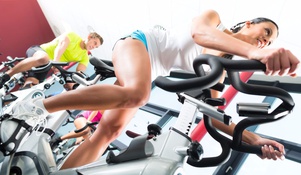Tips for Lifting Newbies
Have you always imagined yourself being the next Arnold Schwarzenegger? Did just the mere thought of being a weightlifter make you excited and fulfilled? If so, before you hit the gym and start working on those muscles, you must know a couple of things that’ll keep you safe, well-trained and ready to become the next weightlifting champion.
Never Skip the Warm Up
The worst thing you can do is start lifting without a proper warm up exercise. Be sure to get your heart pumping and muscles warm by jumping, doing jumping jacks, leg swings, push-ups, hip raises, bodyweight squats and lunges. Once you’re done with this, you should do a set or two of bar lifting, without putting any weights on it. Then, you can start with a real lift.
Start Light
Every lifting beginner should start with light lifting. Getting used to a proper form is of great importance, so don’t try to do too heavy lifting before you are absolutely sure you are ready for it. If you can lift 25 lbs, don’t lift the entire weight, but start with less than you can lift and go for 20 lbs. It’ll be much easier for you to pick up on heavier liftings, and it’ll prevent you from hurting yourself early in the beginning.
Move on to Heavy Lifting after a Month
One month after your first lifting training is the perfect time to start with more serious weights. Now you can actually start lifting weights that’ll get you to your desired goal, whether it’s increased strength, burning fat or building muscle. If you’ve set your mind to building muscle, heavy weights and low reps will be your best choice of workout. Four to eight reps per set are the ideal amount of lifting you should be doing in order reach the target muscle volume.
Use the Entire Body to Gain Strength
Ann all-round strength is best achieved with full-body exercises. In order to do a push up, all body muscles have to be included, so it’s a much better alternative than, for example, a bench-press. With a push up you work both on smaller muscles as well as larger ones.
Get a Proper Gear
Without comfortable clothes and proper equipment, the workout will not be efficient. Therefore, be sure you’re well equipped with quality lifting shoes that’ll keep you safe from injuries. Furthermore, invest in lightweight shirts and comfortable shorts or sweatpants. Water bottle should always be by your side, because you have to be hydrated all the time. Additionally, pack on some wrist wraps, sports tape, weightlifting tights, lifting wraps, weightlifting belt and knee wraps. These will keep your joints unharmed and your entire body fully-secure for your next weightlifting training.
Develop a Routine
The type of the routine you’re about to develop depends on your final goal. For example, you can rotate the type of exercises each day; the first day of the week can be reserved for planks, wide grip pull-ups, bench-press and squats. The next day you can focus on hanging knee raises, inverted rows, overhead press and deadlifts. Next, you can concentrate on doing reverse crunches, weighted chin ups, weighted dips and weighted lunges. These were the perfect combinations of pull exercises, push exercises and leg exercises.
Final Thoughts
Before heading out to the gym to start weightlifting, be sure to get familiar with all the basics of weightlifting. Know your muscles, determine what your goal is, and if you don’t think you can do it on your own, feel free to hire a professional to guide you. Every beginning is difficult, so it’ll be easier if someone is there to help you.





